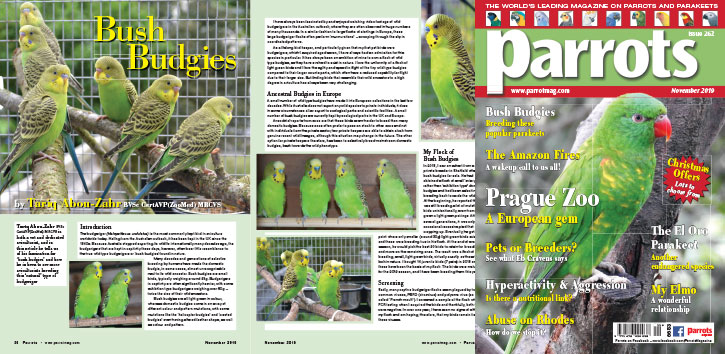
by Tariq Abou-Zahr BVSc CertAVP(ZooMed) MRCVS
The budgerigar (Melopsittacus undulatus) is the most commonly kept bird in aviculture worldwide today. Hailing from the Australian outback, it has been kept in the UK since the 1840s. Because Australia stopped exporting its wildlife internationally many decades ago, the budgerigars that are kept in captivity these days, however, often bear little resemblance to the true wild type budgerigars or ‘bush budgies’ found in nature.
Many decades and generations of selective breeding by humans have made the domestic budgie, in some cases, almost unrecognisable next to its wild ancestor. Bush budgies are small birds, typically weighing around 29g. Budgerigars in captivity are often significantly heavier, with some exhibition type budgerigars weighing over 60g – twice the size of their wild ancestors.
Bush budgies are all light green in colour, whereas domestic budgies come in an array of different colour and pattern mutations, with some mutations like the ‘helicopter budgies’ and ‘crested budgies’ even having altered feather shape, as well as colour and pattern.
